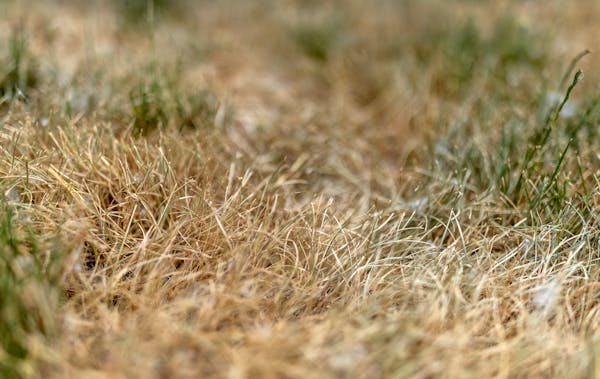Gusty winds and a little rain may have spared Minnesota from the worst of the Canadian wildfire smoke that started billowing into the state Thursday morning.
Meteorologists with the Minnesota Pollution Control Agency downgraded the threat for most of the state for Friday from the red category to orange — meaning enough pollutants will still be in the air to make it unhealthy for people with heart and lung conditions. It's unclear how long the smoke will linger over the state. Much of it is expected to dissipate late Friday as a warm front blows in from the south.
"There is still quite a bit of uncertainty with how much smoke may remain," forecasters wrote.
Heavy plumes of smoke have been pooling and building up all week from fires in the Northwest Territories and the shifting wind pulled it down to Lake Winnipeg and toward northern Minnesota over the past several days. Much of the smoke was expected to hover over the Twin Cities and southern Minnesota by Thursday afternoon, but gusty winds kept the pollution from reaching that far south.
While winds were expected to calm down overnight and into Friday morning, it "now looks unlikely" that very high amounts of pollutants and fine particulate matter will make it to the state, according to forecasters. Southern Minnesota and the Arrowhead may avoid any smoke at all. The rest of the state is still expected to receive unhealthy levels of it — albeit not as bad as originally feared.
Canadian wildfire smoke has besieged the Upper Midwest all summer. The Pollution Control Agency has issued 17 air quality alerts this year, beating the previous record of 13 set in 2021. In June, wildfire smoke from Alberta and Saskatchewan caused the worst air quality levels ever recorded in the Twin Cities.
Recent rain and cool weather has helped relieve some of the smoke coming from forests in southern and central Canada. But for the past several months a heat dome has remained over the Northwest Territories, where many fires continue.

Extreme fire risk for the Twin Cities metro - warm and dry bias to linger into late October

Welcome to 'Aug-tober': Dry with a few 80s into mid-October

19th day of 80s in September but temperatures cool off a bit on Tuesday

Welcome to the driest, warmest September on record

